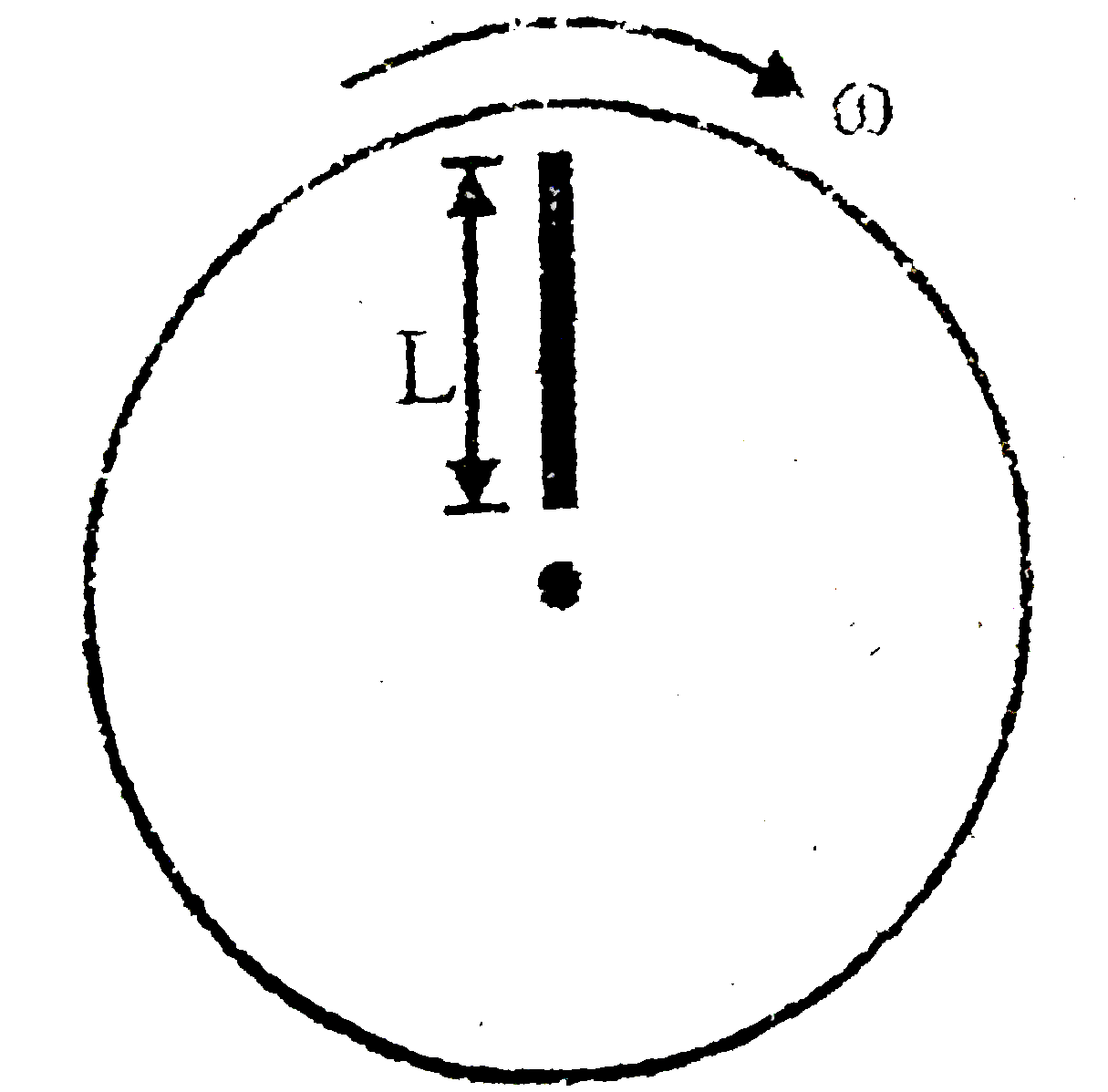A small block is placed on a horizontal rotating disc wrt vertical axis passing centre of disc, at constant angular velocity w. Find distance of blocxk from centre of disc if disc doesnt slip
Step by step video & image solution for A small block is placed on a horizontal rotating disc wrt vertical axis passing centre of disc, at constant angular velocity w. Find distance of blocxk from centre of disc if disc doesnt slip by Physics experts to help you in doubts & scoring excellent marks in Class 12 exams.
Updated on:21/07/2023Topper's Solved these Questions
Similar Questions
Select ALL correct answer :
A disc of radius R is placed over a horizontal table in such a way that plane of the disc is horizontal and rotated about its vertical axis passing through its center with angular velocity ω. A layer of grease of thickness l is present between the table and the disc.Coefficient of viscosity of grease is η .Then,
(A) torque needed to rotate the disc with constant angular velocity is πηωR44l
(B) torque needed to rotate the disc with constant angular velocity is πηωR42l
(C) power needed to rotate the disc with constant angular velocity is πηω2R42l
(D) power needed to rotate the disc with constant angular velocity is πnω2R44l
View SolutionA coin placed on a horizontal rotating disc, with its centre at 10 cm from the centre of the disc, is about to slip off when the disc performs 60 rpm. Find the coefficient of friction between the coin and the disc.
View Solution
Knowledge Check
A uniform rod of mass m and length L lies radialy on a disc rotating with angular speed ω in a horizontal plane about vertical axis passing thorugh centre of disc. The rod does not slip on the disc and the centre of the rod is at a distance 2L from the centre of the disc. them the kinetic energy of the rod is
 A49mL2ω224B2mω2L2C124mω2L2D13mL2ω224
A49mL2ω224B2mω2L2C124mω2L2D13mL2ω224A uniform disc of mass M and radius R is rotating about a horizontal axis passing through its centre with angular velocity ω . A piece of mass m breaks from the disc and flies off vertically upwards. The angular speed of the disc will be
A(M−2m)ω(M−m)B(M+2m)ω(M+m)C(M−2m)ω(M+m)D(M+2m)ω(M−m)A uniform disk of mass 300kg is rotating freely about a vertical axis through its centre with constant angular velocity ω. A boy of mass 30kg starts from the centre and moves along a radius to the edge of the disk. The angular velocity of the disk now is
Aw06Bw05C4ω05D5ω06
A horizontal disc is rotating about a vertical axis passing through its centre. If an insect moves from centre to rim then the angular momentum of the system
View SolutionA horizontal disc is rotating about a vertical axis passing through its centre. If an insect moves from centre to rim then the angular momentum of the system
View SolutionA small coin is placed on a stationery horizontal disc at a distance r from its centre. The disc starts rotating about a fixed vertical axis through its centre with a constant angular acceleration α. Determine the number of revolutions N, accomplished by the disc before the coin starts slipping on the disc. Find the coefficient of static friction between the coin and the disc is μ9.

View SolutionA circular disc rotates about an axis passing through its centre with a certain angular velocity. Suddenly a small piece of the disc is broken from the edge and falls down. Then
View SolutionA small coin of mass 80g is placed on the horizontal surface of a rotating disc. The disc starts from rest and is given a constant angular acceleration α=2rad/s2. The coefficient of static friction between the coin and the disc is μs=3/4 and cofficient of kinetic friction is μk=0.5. The coin is placed at a distance r=1m from the centre of the disc. The magnitude of the resultant force on the coin exerted by the disc just before it starts slipping on the disc is

View Solution
